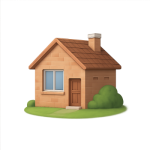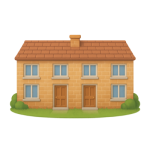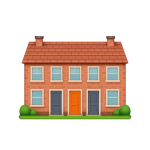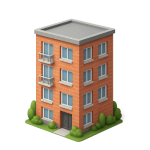Useful Links
Social
How Do House Prices Vary Across Kenilworth, Warwickshire?
Review how average house values across Kenilworth have changed quarter to quarter, with side-by-side comparison tools.
You’ll also be able to pinpoint the areas where both volume and value are steadily on the rise.
How much is your Kenilworth home worth?
Get a personalised estimate based on recent local sales and property type.
What Should Properties in Kenilworth Cost?
Property Type Breakdown
How big is the property?
Choose your comparison:
Kenilworth House Prices - Summary
An overview of house prices in Kenilworth since 2022.
House Prices > Kenilworth
| Year | Average Price | Transactions |
|---|---|---|
| 2025 (proj.) | £413,900 | 428 |
| 2024 | £408,300 | 323 |
| 2023 | £409,400 | 347 |
| 2022 | £414,000 | 407 |
| 2021 | £416,200 | 643 |
| 2020 | £404,200 | 396 |
| 2019 | £371,400 | 433 |
| 2018 | £377,700 | 450 |
Wondering if Kenilworth’s housing market has kept its cool, or if prices are changing faster than traffic lights along Warwick Road on a Friday night? The numbers reveal a town in flux, with its own unique tempo.
After a modest dip in prices in 2019, Kenilworth’s property values staged a remarkable comeback. The market then saw notable surges through 2020 and 2021, likely fuelled by pandemic-driven demand and the craving for extra space. That said, from 2022 onward, prices edged back just slightly before settling close to the £410,000 mark. Projected growth for 2025 suggests the market is set for a gentle climb, rather than any dizzying leaps.
- Sales activity has been anything but smooth. Transaction numbers spiked dramatically in 2021, making getting an offer accepted feel like competing for Glastonbury tickets. Yet, by 2023 and 2024, sales dipped to multi-year lows before a potential partial bounce-back in 2025.
- This dynamic signals a market where demand and stock have not always played nicely with each other, sometimes seeming out of sync.
- Even so, the average property value stayed impressively stable, hinting at resilience even when activity softened.
If you’re wondering whether Kenilworth has lost its desirability, these price trends suggest buyers are still competing-sometimes fiercely-for that elusive offer letter.
Wondering how prices are looking in Kenilworth? Start by browsing the current houses for sale in Kenilworth.
Average House Prices Across Kenilworth by Home Type

Detached
Avg. Property Price: £608,200
Avg. Size of Property
1,431 sq/ft
Avg. Cost Per Sq/ft
£440 sq/ft
Total transactions
445 (since 2021)

Semi-detached
Avg. Property Price: £379,400
Avg. Size of Property
962 sq/ft
Avg. Cost Per Sq/ft
£404 sq/ft
Total transactions
476 (since 2021)

Terraces
Avg. Property Price: £297,500
Avg. Size of Property
837 sq/ft
Avg. Cost Per Sq/ft
£360 sq/ft
Total transactions
368 (since 2021)

Apartments
Avg. Property Price: £206,300
Avg. Size of Property
654 sq/ft
Avg. Cost Per Sq/ft
£320 sq/ft
Total transactions
95 (since 2021)
Kenilworth’s property market is a dynamic parade, with buyers and sellers moving as quickly as eager punters at the Warwick Races. The array of property types on offer means there’s a route for just about every kind of home-mover, from ambitious first-time buyers to seasoned investors banking on long-term growth. Since 2021, it’s clear that buyers have been especially active across semi-detached and detached homes, with hundreds of transactions logged in each category. That bustling activity signals confidence and a strong appetite for spacious, family-oriented living.
What stands out immediately is the distinct separation in average property values and cost per square foot. Detached houses command the highest price tag and also offer the largest floorplans, illustrating their classic appeal for those seeking both privacy and expansive living space. Semi-detached properties continue to charm buyers with a harmonious blend of comfort and relative affordability, attracting families who want room to grow without stretching too far. These homes consistently keep the competition fierce, almost like footballers jostling for the last spot on the squad.
Flats sit on a notably lower rung, which is both a hurdle and a blessing in disguise for local buyers. Their entry price may be modest by Kenilworth standards, but that smaller cost per square foot still reflects resilient demand amongst downsizers, key workers, and clever first-time buyers. The town’s terraced homes, meanwhile, paint an inviting picture for those seeking an accessible way onto the Kenilworth property ladder. With a vibrant mix of historic charm and practical layouts, they consistently attract interest from young professionals, smaller families, and investors after reliable rental yields.
- Buyers targeting space and long-term comfort are still gravitating toward detached houses, where value meets future potential.
- Those craving balance between cost and living area may find semi-detached options particularly attractive, as they deliver that classic family home feeling at sensible prices.
- Urbanites and budget-conscious movers aren’t shut out of the race, though, with flats and terraced properties providing attainable entry paths even as prices climb.
If you’re aiming to play your cards right in Kenilworth’s thriving housing market, it’s crucial to understand the mix of price, space, and buyer demand that shape each property type. For a closer look into why these differences exist, and to discover which streets are the hottest tickets in town, check out our local analysis: Kenilworth Property Prices Compared: What's Driving the Differences?
So, what’s the core message?
- No matter your goal - moving up, scaling down, or investing - Kenilworth’s market remains accessible and rewarding for those with a bold, nimble strategy.
- Competition is energetic, but there’s always room on the pitch for switched-on buyers who stay alert, do their homework, and move decisively when opportunities arise.
Kenilworth vs Its Neighbours: Property Price Trends
| City | Avg Price (£) | Transactions |
|---|---|---|
| Leamington Spa | £347,300 | 6,758 |
| Coventry | £221,600 | 30,105 |
| Warwick | £357,800 | 5,870 |
| Bedworth | £200,100 | 2,669 |
| Solihull | £358,500 | 11,424 |
| Southam | £325,000 | 2,577 |
| Stratford-Upon-Avon | £374,400 | 5,044 |
| Nuneaton | £230,000 | 11,662 |
| Rugby | £276,000 | 10,740 |
| Studley | £291,300 | 709 |
Kenilworth’s house prices have demonstrated a robust, upward trend-marching upward like walkers scaling Crackley Woods-despite its quiet suburban character and limited transaction pool. When we look closely at the property landscape across neighbouring areas, pronounced stratification emerges. Each local market appears to operate almost as a self-contained ecosystem, shaped by commuter links, housing stock, and local cachet. Let’s break down some of the most salient findings.
- Neighbouring premium hotspots such as Warwick, Stratford-upon-Avon, and Solihull consistently command elevated average values. These markets are buoyed by a combination of top-performing schools, attractive period architecture, and strong commuter flows to both Birmingham and London. House prices in these localities trend well above the regional mean, with limited churn driving constrained supply.
- Transactional activity is concentrated heavily in Coventry, Nuneaton, and Rugby. Coventry’s transaction volumes are particularly astonishing-the largest by a significant margin. This liquidity signals a dynamic and granular market, compelling for both buy-to-let and stepping-up owner occupiers.
- Nuneaton and Bedworth feature as accessible entry points. Their lower average prices, relative to their Warwickshire siblings, underpin resilient demand from first-time buyers, young families, and value-motivated investors seeking stable, commuter-friendly locations with abundant supply.
- Southam and Studley operate as satellite submarkets. They are less liquid, with slower turnover and relatively modest volumes of recorded sales. These parochial localities see prices that reflect their semi-rural allure, but without the frenetic demand of the headline towns.
Kenilworth, as a distinct micro-market, positions itself in the upper quartile-comfortably outpacing Coventry for average property value, though less exceptional than Stratford-upon-Avon or Solihull. This niche is highly sensitive to stock scarcity and aspirational demand from executives or relocation movers. For context, new instructions are often greeted by intense interest, particularly from downsizers and professionals eyeing leafy CV8 postcodes while retaining rapid access to transport nodes.
What should we take from all this?
- Kenilworth’s price point sits in a desirable “sweet-spot”-not unattainable, yet prestige-backed and relatively stable.
- Liquidity rules in Coventry and Rugby, while exclusivity and scarcity drive Leamington, Warwick, and Stratford’s persistent premiums.
- If you’re looking for value-driven opportunity, Nuneaton and Bedworth should catch your eye.
Buying in Kenilworth really is a bit like booking a coveted carriage on a GWR express train. Not always cheap, not always available, but the journey promises both comfort and long-term appreciation, so long as you get on board at the right time.
Quick note: these numbers reflect only broad property price averages and transaction volumes.
No adjustments have been made for home sizes or per square foot value. For deeper insights, head over to our blog. Thanks for reading.
Data You Can Believe In
Official data gets us started, but our model makes it sing. Every recalibration brings the numbers closer to what buyers and agents actually see on the ground.

